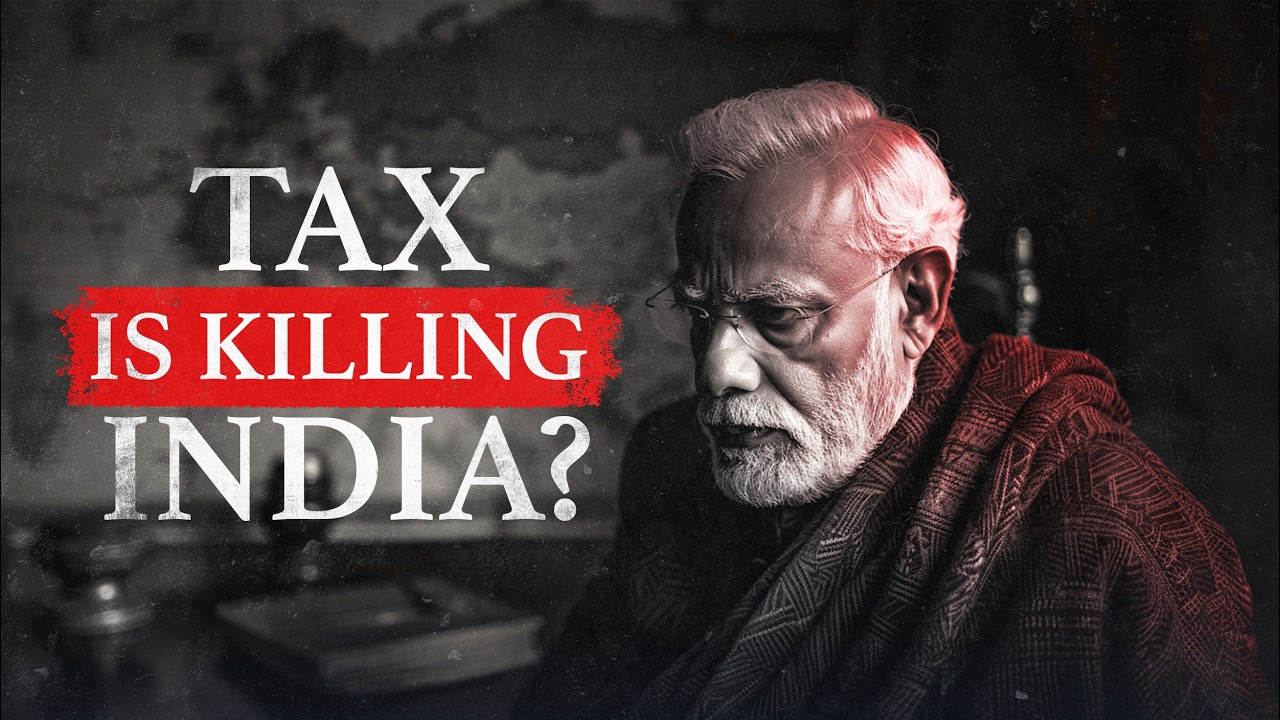Why India NEEDS lower TAXES? | Must watch video for Taxpayers! Akshat Shrivastava
Summary
TLDRThe video script discusses potential improvements to India's taxation system, suggesting the adoption of blockchain for real estate transparency to curb black money, reducing corporate and personal income tax rates to attract businesses and retain talent, and promoting digital tax-friendliness to support remote employment. The speaker proposes tax amnesty for black money declaration and emphasizes outcome-based taxation with third-party audits to ensure responsible spending. The script also promotes the speaker's startup, 'Save My Taxes,' offering tax filing assistance at competitive rates.
Takeaways
- 🏢 The UAE has successfully used blockchain to make real estate transactions transparent, reducing black money involvement and making the market more efficient.
- 🇮🇳 India's black money problem significantly inflates real estate prices, impacting various sectors such as manufacturing and business operations.
- 📊 Increasing India's tax base is essential, with rich farmers and large agricultural enterprises needing to be taxed appropriately.
- 🏭 Corporate income tax in India should be reduced to attract more businesses and prevent them from relocating to countries with lower tax rates.
- 👥 Personal income tax should be capped at 35% to reduce the migration of wealthy individuals and encourage them to invest in the local economy.
- 🌐 Making India more digital tax-friendly can promote digital employment and entrepreneurship, easing the pressure on metro cities and boosting non-metro areas.
- 💼 Corporate tax breaks should be linked to employment generation to ensure wealth distribution and job creation.
- 🧑🌾 An amnesty program for black money declaration, similar to Indonesia's, can help bring black money into the formal economy and reduce the need for high taxes.
- 📈 Outcome-based taxation should be implemented, ensuring tax money is spent efficiently and effectively, with third-party audits to monitor usage.
- 🛑 Excessive taxation across all types (personal, corporate, indirect, and capital gains) should be avoided to prevent stifling economic growth and development.
Q & A
What is the main issue with the Indian taxation system according to the video?
-The main issue is the high tax rates across all types of taxation, including personal income tax, corporate income tax, indirect tax (GST), and capital gains tax, which can hinder economic growth and transparency.
What solution is proposed for making the real estate market more transparent in India?
-The video suggests adopting the UAE model by putting all real estate transactions on blockchain to increase transparency and reduce the impact of black money on property prices.
How does high taxation affect the cost of business operations in India?
-High taxation, particularly the high GST rate, increases the cost of goods and services, which can lead to reduced sales and a negative impact on small businesses that struggle to compete.
What is the connection between political donations and the real estate market in India as per the video?
-The video explains that big businesses often make political donations, and this money primarily goes into the real estate market, inflating property prices due to the black money problem.
Why is the high tax rate on capital gains problematic for investment in India?
-High capital gains tax rates, especially on real estate, can make investing in various asset classes less attractive and ineffective, discouraging investment and economic activity.
What are the three central goals for the Indian taxation system as suggested in the video?
-The three goals are to widen the tax base, boost the ease of doing business in India, and ensure that taxes are outcome-based, meaning they should be linked to effective and efficient public spending.
How does the video suggest linking corporate tax breaks to employment generation?
-The video proposes that tax breaks for corporations should be aligned with the number of jobs they generate, to promote wealth distribution and high-quality employment in India.
What is the proposed cap on progressive taxation in India as per the video?
-The video suggests capping the progressive taxation at a maximum of 35% to reduce the migration of wealthy individuals and encourage them to invest in India.
How does the video propose making India more attractive for digital entrepreneurs?
-By making the tax system more digital-friendly, such as offering lower tax rates for digital nomads and remote workers, and investing in digital infrastructure in non-metro cities.
What is the concept of 'tax amnesty' mentioned in the video, and how could it benefit India?
-Tax amnesty is a policy where individuals can declare their previously undeclared income (black money) by paying a certain amount of tax without severe penalties. This can bring unaccounted wealth into the formal economy and potentially reduce the need for high taxation.
How does the video suggest ensuring that taxes collected are spent sensibly?
-The video recommends an outcome-driven approach to tax spending, with third-party audits to ensure that tax revenue is used effectively and efficiently, avoiding frivolous expenditure.
Outlines

This section is available to paid users only. Please upgrade to access this part.
Upgrade NowMindmap

This section is available to paid users only. Please upgrade to access this part.
Upgrade NowKeywords

This section is available to paid users only. Please upgrade to access this part.
Upgrade NowHighlights

This section is available to paid users only. Please upgrade to access this part.
Upgrade NowTranscripts

This section is available to paid users only. Please upgrade to access this part.
Upgrade NowBrowse More Related Video

बजट 2024: फ़्लैट, सोना और शेयर पर बढ़ा टैक्स

Prabowo Mau Pangkas Tarif PPh Badan Jadi 20%, Pengusaha Diuntungkan?

Did Modi really kill black money in India? : Economic case study

Budget 2024 impact on financial planning - Latest Income tax changes | Tax on stocks & mutual funds

Why I'm Leaving India?: My Struggle with Taxes and Business Challenges

TDS Kya Hai Hindi Me Explained | TDS Claim Process | Tax Deducted at Source In Income Tax
5.0 / 5 (0 votes)